In 2002 I moved to Brazil and fell in love with Bossa Nova. Besides its particular rhythms, I’ve been very intrigued by its harmony and melodies. So I started a deep study on this genre while I was a piano teacher at the Music College in Vitória (Espírito Santo). The results led me to publish some books, one of them entirely dedicated to the Bossa Nova style and musics, covering rhythms, harmony, peculiar cliches and the melody’s characteristics.
Below you can see the thee books I published on Brazilian Rhythms:
Bossa Nova is known for its rich harmonies, melodic refinement and rhythmic swing. Learning to play this musical style thus requires studying its specific musical aesthetic qualities. In this post I talk about some characteristics of bossa nova harmony. I suggest some exercise and some ideas for the studies. At the end of this article you will find a song (called “A influência da bossa”) with a playback to play along. Hope you enjoy!
If we examine the scores of great Bossa Nova composers, we find that this musical style rarely uses triads and instead prefers chords that offer richer sonority. Bossa Nova harmony introduces notes like 9th, 11th, 13th that enrich the chords.
Beyond of its richness, chords sequences emphasize the movement of the melodic tensions in a characteristic way. We will observe it along the article.
Chords enrichment, however, is just one of the characteristics of Bossa Nova harmony. At a closer look we can pick up a bigger quantity of elements so interesting that worth a deep study.
In my Piano Bossa Nova: Progressive Method book I organize the study of the harmony into three “layers”:
What is a Voicing?
Regarding harmony, it is important to understand the concept of voicing, which refers to a specific chord structure, that is, a particular disposition of the notes. Take, for instance, the voicing 6-2-b3-5 in three different Keys:

As regards the Chord Types study, we can observe, for example, that Bossa Nova alternates the major 7th and major 6th on Xmaj7 chords in order to create harmonic richness. This is especially used when we have the same chord for more than one bar.
Another typical aspect is the use of clusters. With this term we usually indicate major second or minor second interval inside the chord. In the image below you can observe the cluster between the 9th and the 3rd of the chord:
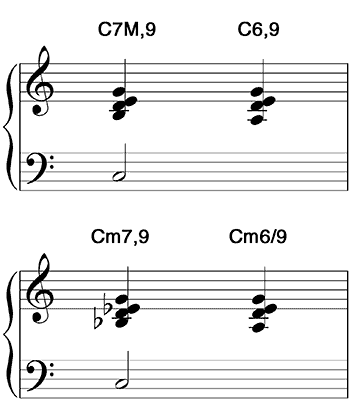
Next we can observe the Xmaj7 chord category enriched with 6th and 9th notes. In the first line we have more “tradicional” voicings using 6th and 9th notes, while in the second line we have more interesting voicings:
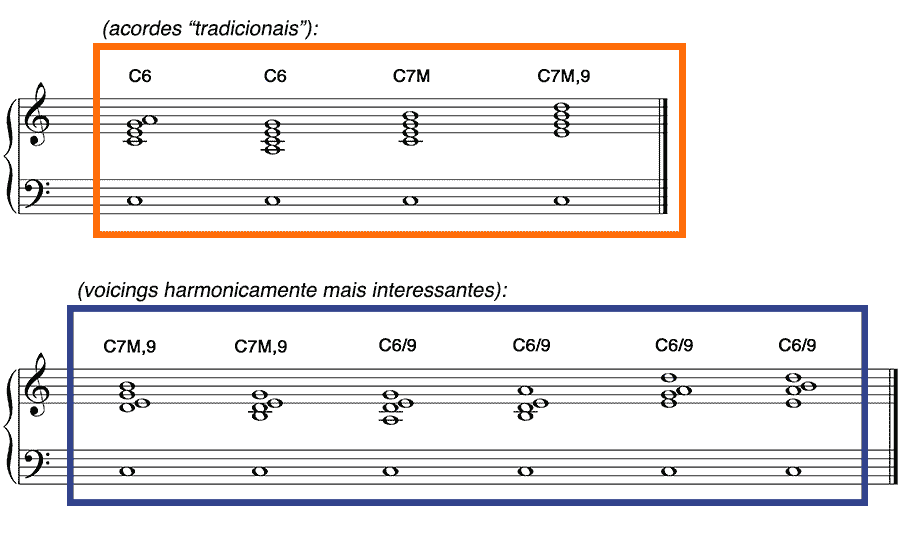
In the book I suggest to study each voicing in each key. It can be done going up and down chromatically, for example, as follows (see the image and the video):
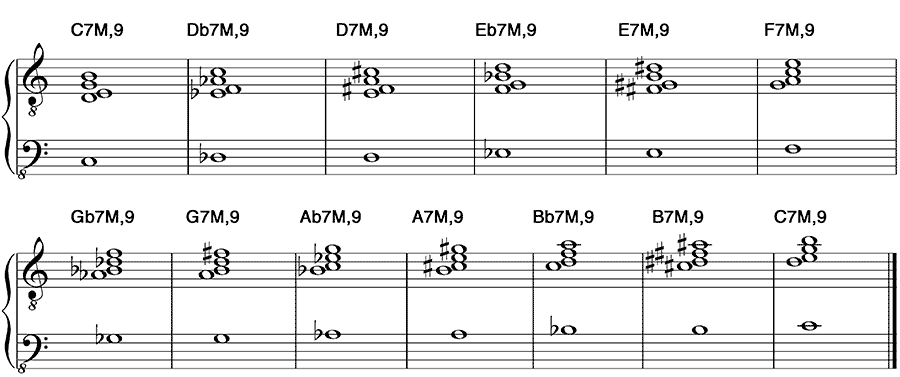
Now we can study, for example, the 7-2-3-5 voicing on each key, as follows:
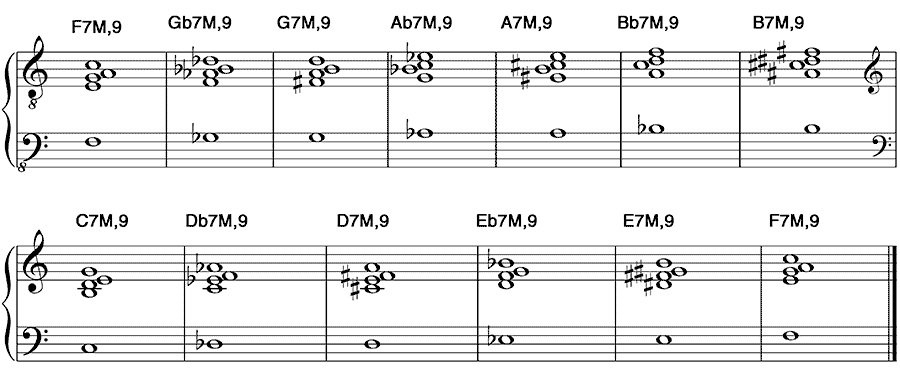
I want to share with you a song from the Piano Bossa Nova book showing the chords we can use to comp. You can use the mp3 audio file to play along if you like (I strongly recommend this kind of practice).
A influência da bossa
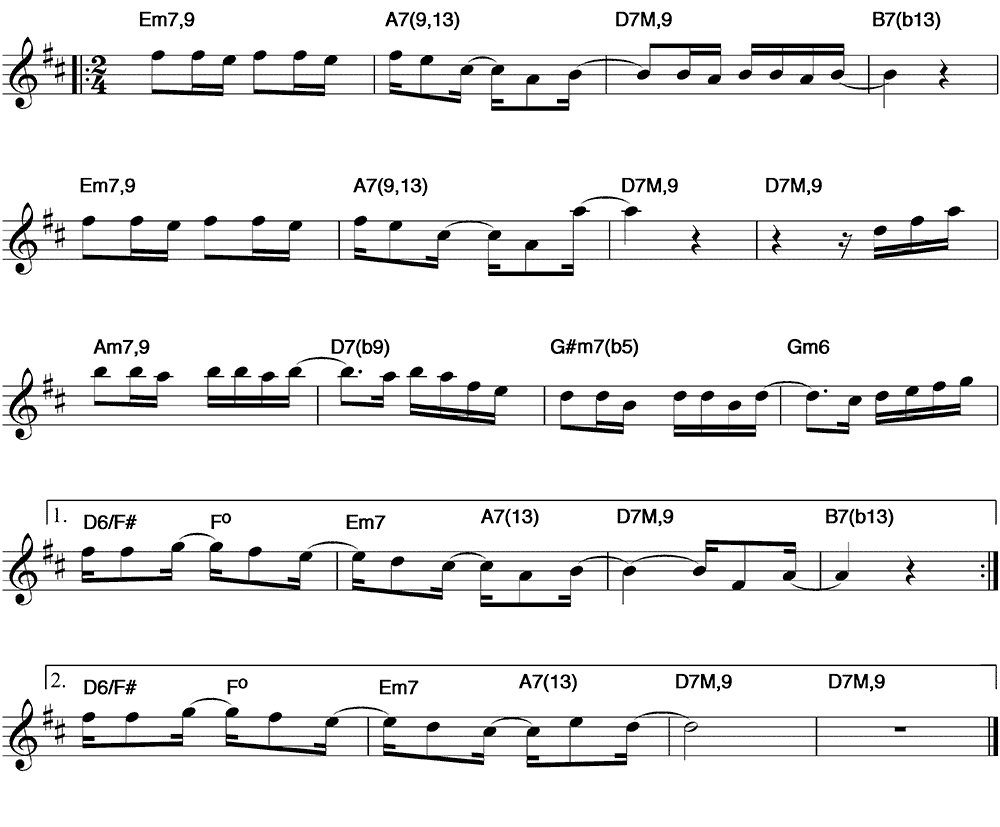
The voicings I use in the book to comp this song:
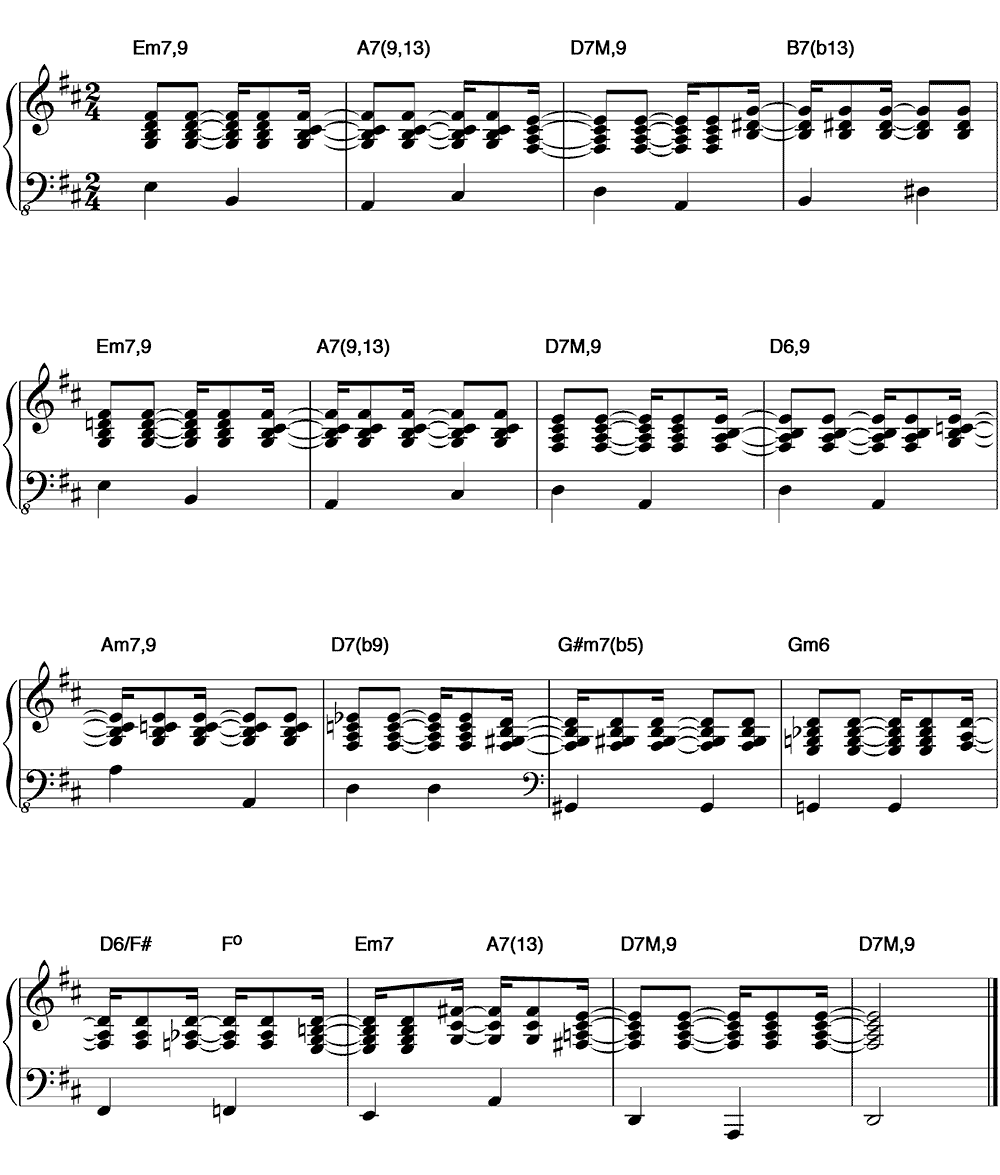
I hope you have fun playing this song with the play-along.
Comentar com Facebook

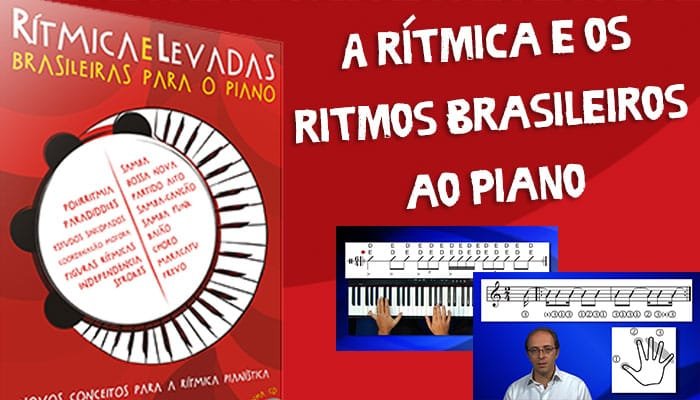


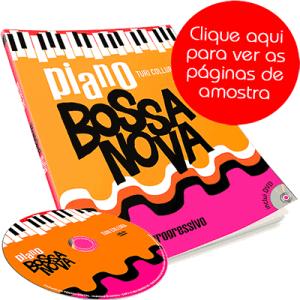
Comentários